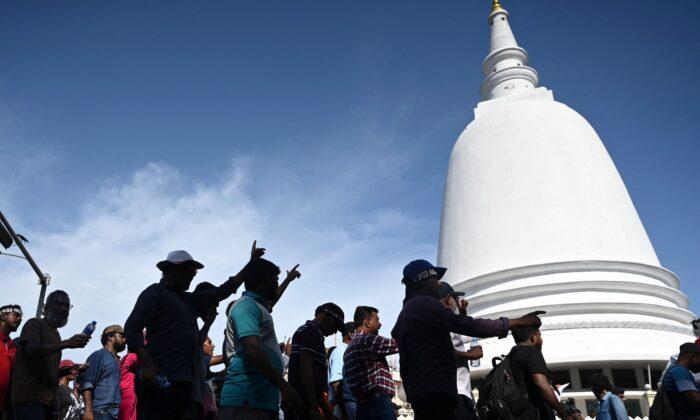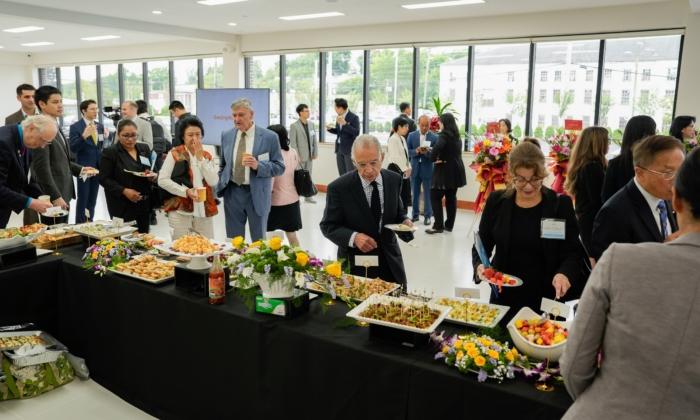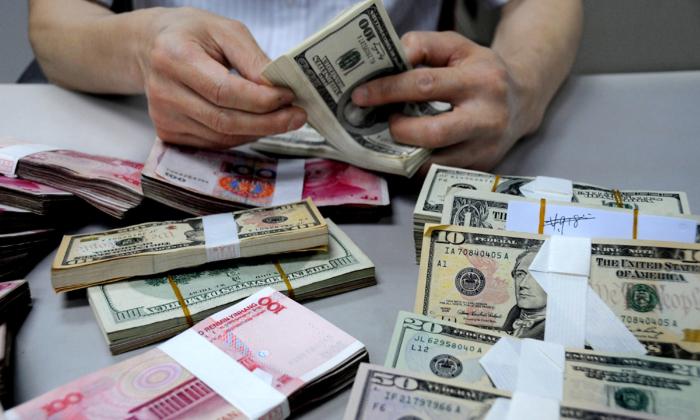Since Sri Lanka announced its bankruptcy, voices in mainland Chinese news media have been scrambling to propose solutions on how to recover billions in investments that the Chinese Communist Party (CCP) loaned to the country through its Belt and Road Initiative, aimed at expanding the communist regime’s infrastructure projects overseas.
Sri Lanka, once known as the “Pearl of the Indian Ocean,” declared bankruptcy on July 5. The country’s economy has collapsed amid severe inflation, depleted foreign exchange reserves, and scarce civilian resources, triggering a food, electricity, and fuel crisis.
Proposal to Offer China Land
A commentary published on July 10 on the Chinese portal NetEase said that if Sri Lanka could not repay the money, the country could offer China land or more infrastructure projects, such as “designating a few more special economic zones” and “leasing them out for 99 years.”The CCP government’s previous investments in the Hambantota International Port and Port of Colombo fit in with the CCP’s “long-term strategic vision” and a good use of Sri Lanka’s geographical advantage, the article touted.
Another article on NetEase published July 13 suggested that China could consider taking assets of Sri Lanka—such as agricultural products—as payment for the debts.
Another article titled “Who will pay back the money Sri Lanka owes China” was cited by several media outlets as saying that the CCP could have sent its warships to “take control of Port of Colombo”—Sri Lanka’s largest port—to cover its debts and make it another Chinese port in Sri Lanka.
However, it continued, “if Sri Lanka is willing to follow the example of the Port of Djibouti by transferring the right to build a military base to China, then China would definitely consider it.”
Djibouti, located on the western shore of the Gulf of Aden in northeastern Africa, has strategic importance, with access to both the Red Sea and the Indian Ocean and linking Europe, the Asia-Pacific, the Horn of Africa, and the Persian Gulf.
Port of Hambantota

In December 2015, the Sri Lankan government leased the Hambantota port to China Merchants Holdings, a CCP-backed port operator, for 99 years with 15,000 acres (about 653 million square feet) of land to offset its debts.
The port is only six to 10 nautical miles from the maritime routes from Asia to Europe—a vital node for the CCP’s Belt and Road Initiative.
Sri Lanka is an island nation at the southern tip of the Indian peninsula with only 22 million people, equivalent to the population of Beijing.
Although it is reliant on energy imports and less developed in the industrial sector, the country is strategically situated on an important shipping route for Middle Eastern oil from the Indian Ocean to East Asia.
In 2007, China invested $1.5 billion in the construction of a deep-water port in Hambantota, taking it into operation in June 2012.
However, the port has not been performing well in attracting commuter vessels.
A September 2021 report by China Merchants Port—named China Merchants Holdings before 2016—showed that cargo throughput of the Port of Hambantota was only 350,000 tons in 2018 and reached 1.2 million tons in the first half of 2021, lagging far behind the Port of Singapore, whose cargo throughput was nearly 600 million tons in the same period.
Not receiving the expected revenue, Sri Lanka, therefore, went into debt default.
On July 25, 2017, the Sri Lanka port authority signed with the Chinese side to hand over 85 percent of Hambantota International Port Group Corporation and 99-year operational management control of Hambantota Port and surrounding land to China Merchants Port for a low price of $1.12 billion in a bid to repay the loan from the CCP.
The CCP was criticized for setting up a debt trap for Sri Lanka, which the CCP has repeatedly denied, with some Chinese media saying that Sri Lanka would not have had the money to build Hambantota port if not for Beijing’s contribution.
But the fact is that completion of the Hambantota port did not bring any benefits to Sri Lanka, instead leaving it in debt, and eventually the new port was merely used for offsetting its debts leaving the country in the saddle of the CCP.
Belt and Road Project

In recent years, the CCP has been lending money to Sri Lanka for infrastructure development.
According to the 2019-2020 Report on Contracted Foreign Works, by the end of 2019, the cumulative contract value of Chinese enterprises in Sri Lanka exceeded $26 billion, with an accumulated turnover of more than $19.5 billion. Projects completed or under construction include four highways, two major ports, two international airports, one of the largest thermal power stations, and an integrated water conservancy hub.
Data collected by OOSGA, a strategic and market research organization, showed that Sri Lanka’s GDP per capita in 2020 was about $3,852, equating to one-third of the world’s per capita GDP level ($10,910). Many people in the country rely on their family members working abroad to send money back.
According to statistics, Sri Lanka has about 1.5 million people working in the Middle East and other regions, and the foreign exchange sent back to Sri Lanka is up to $2.5 billion every year.
As a result, Sri Lanka’s domestic demand is relatively weak. The luxurious projects funded by the CCP were out of touch with Sri Lanka’s national conditions and were deemed “white elephant” projects of a huge scale but futile function.
Mattala Rajapaksa International Airport, built with a loan from China, is located in the Hambantota region. However, the area is not a major tourist destination in Sri Lanka, so the airport has been called “the world’s emptiest international airport” with little traffic since its completion.
According to a July 2020 report by the Center for Asia Pacific Aviation (CAPA), the airport was one of the few international airports in the world not affected by the COVID-19 virus pandemic because fairly few passengers were traveling through it.
The airport highway, a major international convention center, stadium, and shopping mall built around the port of Hambantota with the support of a CCP loan have all been left cold and unattended.
CCP’s Military
A large number of costly projects impose a heavy debt burden on the borrowing countries, which has made the purpose of the CCP’s infrastructure investments questionable.Craig Singleton, a researcher at the Foundation for Defense of Democracies, a Washington-based think tank, told VOA last August that the CCP’s building ports in geostrategic countries, including those located at maritime choke points, is part of its core global strategy. These ports allow Beijing to exert political influence not only in the port countries but also on neighboring nations.
In a 2017 analysis, the Center for Advanced China Research, a nonprofit organization, said that U.S. defense contractor Booz Allen Hamilton (BAH) first coined the term “String of Pearls” to describe the CCP’s strategy in the southern waters of the Eurasian continent in a 2004 report submitted to the U.S. Department of Defense’s Office of Cyber Assessments.
The report warned that the CCP is building strategic relationships along the sea lanes from the Middle East to the South China Sea, protecting China’s energy interests while serving broad security objectives.
Chinese media also mentioned that since Sri Lanka is maintaining a warship for China, the Chinese Navy could freely stop at the port for supplies, speaking of the Chinese Navy’s multirole frigate “Tongling,” which was decommissioned in 2015, that was transferred to the Sri Lanka Navy and then moored in Hambantota port in September 2018.
Considering Hambantota port’s outstanding geographical location, if China were to station an aircraft carrier in the port, its military influence could be extended to the entire Indian Ocean region, and the security of China’s energy corridors would be more insured, the article said.





